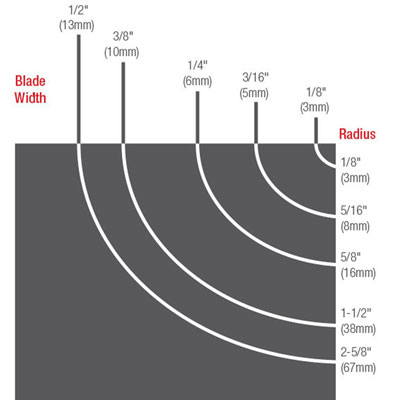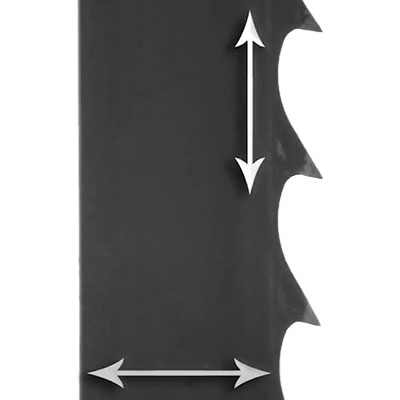“I’d like to buy a blade.”
“Great! Bandsaw? Circular saw? 10”? 12”? What bore diameter do you need?”
“err…”
“Alternate bevel? Thin kerf? Flat tooth? Sheer angle? Triple chip? Chrome plated?”
“I just want a blade!!”
Its FAQ time and one question that we get asked frequently at Carbatec is “which blade should I buy?”.
We understand that it can seem overwhelming because there are so many options available in the market. So which blade is right for you?
There are two things we recommend you consider before buying any tooling.
- We recommend that you buy the best quality tooling you can afford. Cheap tools may seem like they save you money in the short term, but they’re far more likely to perform poorly, cause frustration and require replacement sooner – costing more as a result.
- Ensure you select and buy the right blade for the specific job you have at hand.
One risk of cheaper quality tooling is that you misinterpret the results and frustrations you experience, as a problem with the equipment itself. More often than not its not the machine, it’s the quality of the tooling; the tooling is blunt; or you’re using the wrong blade for the type of cut.
We thought we'd put together a very basic, “rule-of-thumb” guide for selecting your next blade.
When referring to bandsaw blades, many machines come with a blade already fitted. While this factory blade may get you going, we strongly recommend that you purchase an additional, quality blade to start with. This will set you off on the right track for using your new machine!
Carbatec’s extensive aftermarket blade options are made from quality European steel stock, cut to length and brazed here in Australia. They represent excellent value for money and come in a range of configurations for all jobs, along with various sizes to suit many bandsaws on the market.
A basic rule of thumb guide to bandsaw blade sizing and tooth pitch, without going into detail and exceptions to this, is:
- The narrower the blade in width (or depth), the tighter the cut radius possible and therefore, its more suited to curve-work.
- The wider the blade, the easier to maintain a straight cut and therefore it lends itself well to straight cuts and resaw work.
- The less teeth per inch, the more aggressive the cut, more effective the chip/swarf clearance, and is therefore more suited to deeper stock or cutting with the long fibres of the grain. For this reason, resaw blades often have one to three teeth per inch, but they can leave the surface finish a little rough.
- Curve-cutting blades often have six or more teeth per inch. The more teeth per inch, the smoother the finished cut and less tear out when cutting across the grain, for example when cutting out a bowl blank.
- Blades designed to cut plastic or metal usually have far more teeth.
- There are in-between general-purpose blades that can be used for a variety of cuts and are useful to have if you loathe changing blades! Their limitation is that they won’t be as effective or produce as good results as a blade designed for a specific use.


There are quite a number of other variables here too. Blades are available in a variety of grinds, much like circular saw blades. Alternate bevel; triple chip grind; thin kerf etc. There are also different blade materials and brazed teeth, such as Bi-Metal blades; Stellite tips and Tungsten Carbide teeth.
One premium and very popular blade type is the Laguna ReSaw King and it’s aptly named! This blade is crafted in Germany and further refined in USA. It features Tungsten Carbide Teeth in a variable tooth pitch, on a thin kerf body. It is perfectly suited to resawing as it creates minimal waste, cuts effortlessly, leaves a very smooth cut and will outlast standard blades by many times over. It can even be resharpened by professional saw doctors!
If you’re still unsure, just follow the manufacturer’s guidelines. Carbatec blades feature a guide on the packaging comparing blade width and cut radius as an example. Accept that if you go too far outside of these guidelines, your results may not be as good as you might have hoped.
And that’s it. So, while it does get a lot more complex when you get into the nitty gritty detail, provided you follow these basic guidelines when you’re next buying your tooling, you’re well on your way to getting great results for your next project.
PS: Remember to set-up your machine guides, blade tracking etc correctly before you undertake any cut!